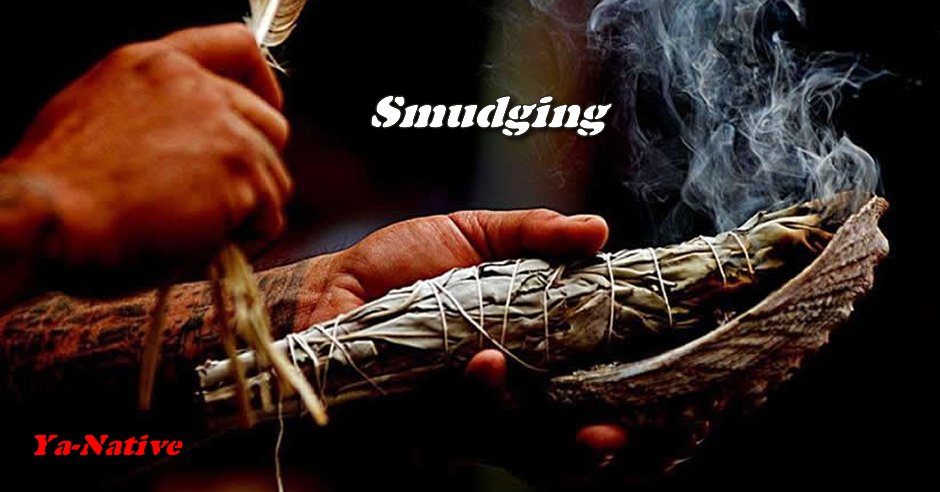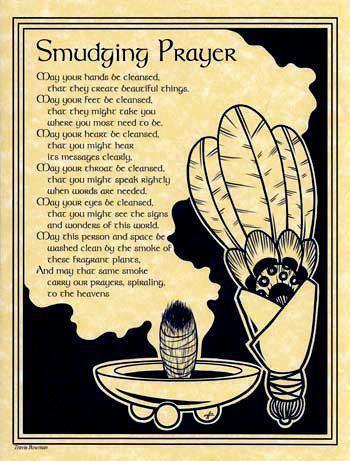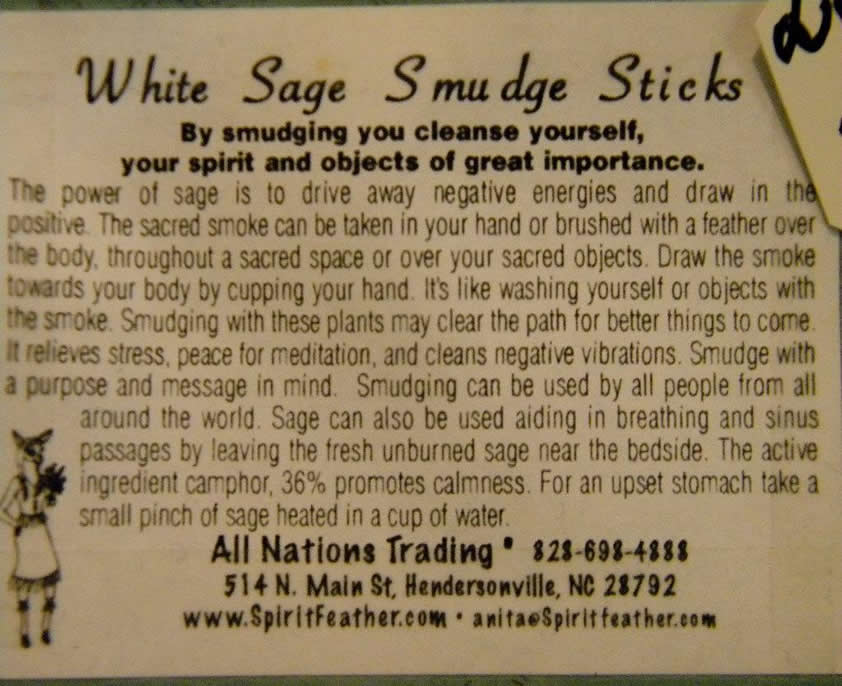
Smudging is a traditional practice that has been an integral part of Native American culture for thousands of years. It is a cleansing ritual that involves burning sacred herbs or other materials to purify and bless people, places, and objects. Smudging has a spiritual significance and is used to connect to the spiritual world, to honor ancestors, and to promote healing and well-being. With over 500 federally recognized tribes in the United States alone, smudging varies greatly in its practices and beliefs. In this article, we will explore the different perspectives on smudging across various Native American cultures, delving into the materials, intentions, and significance of this revered tradition.
The Concept of Smudging in Native American Culture
Native American culture has a rich history of traditional practices, one of which is smudging. Smudging is a spiritual ceremony that involves burning sacred herbs and plants to cleanse negative energy and bring positive energy into a space or person. This practice has been passed down through generations and is still widely practiced in Native American communities today.
What is Smudging and How is it Practiced?
Smudging is the act of burning sacred herbs and plants, such as sage, cedar, sweetgrass, or tobacco, to purify a person or space. The smoke from the burning herbs is believed to carry negative energy out of the space or person, creating a more positive environment. The practice involves lighting the herbs and fanning the smoke around with a feather or fan, allowing the smoke to reach all corners of the space or person.
The Historical Roots of Smudging in Native American Culture
Smudging has been a part of Native American culture for centuries and has been passed down through generations. The practice is deeply rooted in traditional beliefs and is used to purify spaces, people, and objects. Smudging has been used in various ceremonies, including sweat lodges, sun dances, and vision quests. The practice has evolved over time and is still an important part of Native American culture today.
How Smudging Differs from Other Types of Cleansing Practices
Smudging is unique to Native American culture and differs from other types of cleansing practices in several ways. Unlike traditional cleaning, smudging is a spiritual practice that involves creating a sacred space and inviting positive energy in. It is not meant to replace traditional cleaning practices but is used in conjunction with them to create a more balanced and positive environment.
The Role of Smudging in Native American Spirituality
Smudging is an important part of Native American spirituality and is believed to have a significant impact on a person's physical, emotional, and spiritual well-being. The practice is often used in healing ceremonies and is believed to have the power to cleanse negative energy and bring positive energy into a person or space.
Smudging and the Connection to the Spiritual World
Smudging is believed to be a way of connecting to the spiritual world and the ancestors who have passed on. The smoke from the burning herbs is believed to carry prayers and messages to the spirit world, making it an essential part of many Native American ceremonies.
The Role of Smudging in Healing Practices
Smudging is often used in healing practices to cleanse a person's energy and promote healing. It is believed to help clear negative energy and reduce stress and anxiety, making it an important tool in promoting overall healing and well-being.
The Significance of Smudging in Honoring Ancestors and Traditions
Smudging is also used as a way of honoring ancestors and traditional practices. It is often used in ceremonies that celebrate the passing of seasons, honoring the dead, or recognizing important events in Native American history. The practice is essential to maintaining and passing down traditions from one generation to the next.
Materials Used in Smudging Rituals Across Different Tribes
Different tribes use different materials in their smudging rituals, but there are some common herbs and plants that are used across many Native American communities.
The Different Herbs and Plants Used in Smudging
Sage is one of the most commonly used herbs in smudging rituals, and it is believed to cleanse negative energy and promote healing. Cedar is also used in many smudging ceremonies and is believed to purify and protect a space. Sweetgrass is used to bring positive energy into a space or person, while tobacco is used to offer prayers and connect with the spirit world.
The Significance of Specific Herbs in Different Tribal Smudging Rituals
Different tribes use different herbs and plants in their smudging rituals, and the significance of each herb may vary. For example, some tribes use pine needles or juniper berries instead of sage, while others use lavender or rose petals. Each herb has its own unique properties and is believed to have a specific impact on a person's physical, emotional, or spiritual well-being.
The Importance of Using Natural Materials in Smudging Ceremonies
Using natural materials in smudging ceremonies is essential to the practice. The herbs and plants used in smudging represent the earth, and by using natural materials, practitioners are honoring and respecting the earth and the environment. Using synthetic materials goes against the principles of the practice and is considered disrespectful.
The Importance of Intention in Smudging Ceremonies
Intention is a crucial aspect of smudging ceremonies, and it can significantly impact the effectiveness of the practice.
The Role of Intention in Setting the Tone for Smudging Ceremonies
Setting clear intentions is crucial to the success of a smudging ceremony. The practitioner must be clear about what they hope to achieve through the ceremony, whether it be cleansing negative energy or promoting healing. The intention sets the tone for the ceremony and guides the practitioner's actions and movements.
How Intention Affects the Effectiveness of Smudging
The effectiveness of smudging is directly related to the practitioner's intention. When the practitioner sets a clear intention and is fully present in the ceremony, the practice is more likely to be effective in cleansing negative energy and promoting healing.
Guidelines for Setting Clear Intentions in Smudging Ceremonies
To set clear intentions for a smudging ceremony, it is essential to identify the desired outcome and focus on what needs to be cleansed or healed. Practitioners should take time to center themselves and connect with their spiritual beliefs before starting the ceremony. It is also important to be fully present in the moment and stay focused on the intention throughout the ceremony.Appropriation in Smudging
The Importance of Respecting Native American Cultural Practices
Understanding the Difference Between Cultural Appreciation and Appropriation
How Non-Native People Can Approach Smudging with Respect and Understanding
Conclusion
The Continued Significance of Smudging in Native American Culture Today
The Importance of Preserving and Respecting Native American Cultural Practices
How We Can Honor and Learn from Native American Culture in our Daily Lives
In conclusion, smudging is a sacred tradition that has been passed down through generations of Native Americans. It has spiritual, cultural, and practical significance and is used in many different ways across various tribes. By understanding the different perspectives and practices of smudging in Native American culture, we can gain a greater appreciation for this ancient practice and continue to honor and respect the traditions of these communities.Frequently Asked Questions
What is the purpose of smudging in Native American culture?
Smudging is used for various purposes in Native American culture such as spiritual purification, cleansing of negative energy, healing, honoring ancestors and traditions, and connecting with the spiritual world.
What materials are used in smudging rituals?
Different tribes use various herbs and plants in their smudging rituals, including sage, sweetgrass, cedar, lavender, and tobacco. The materials used depend on the tribe and the purpose of the smudging ceremony.
Can non-Native Americans participate in smudging ceremonies?
While some tribes may permit non-Native Americans to participate in smudging ceremonies, it is important to approach these traditions with respect and cultural sensitivity. It is advisable to seek permission from the tribe's elders or spiritual leaders before participating in any ceremonial practices.
Is smudging only practiced in North America?
No, smudging practices that use burning of specific herbs are common in many other cultures and have been for thousands of years. The practice of burning herbs has been used by ancient civilizations from across the world, such as India, Greece, Egypt, and many more. Though these cultures have their own unique practices and traditions, the burning of herbs is a common thread that connects them.
_____________________________
Smudging is the common name given to the Sacred Smoke Bowl Blessing, a powerful Native American cleansing technique. It is a ritual to remove negativity. Smoke attaches itself to the negative energy and removes it to another space. Cleansing is the word traditionally used, but you can think of it as a shift in energy from any bits of negativity to a more positive, peaceful state. Smudging can be used to cleanse an object, a place, or your spirit, mind or body. Native Americans often use smudging in association with other ceremonies.
Smudging involves the burning of sacred herbs and grasses. Native elders teach us that, before a person can be healed or heal another, one must be cleansed of any bad feelings, negative thoughts, bad spirits or negative energy – cleansed both physically and spiritually. This helps the healing to come through in a clear way, without being distorted or sidetracked by negative “stuff”. The elders say that all ceremonies, private or tribal, must be entered into with a good heart so that we can pray, sing and walk in a sacred manner, and be helped by the spirits to enter the sacred realm.

In many traditions, smudging involves a four directions ceremony or prayer. It, thus, sends specific kinds of smoke or prayer into the four different directions. Of course, different tribes have different smudging prayers, but the smoke is typically directed or programmed to do a specific action or a specific direction, aiding in divination. However, in general smudging is used to maintain balance and shield against negative energy. As has been noted above, it is often used as a cleansing agent.
Smudging is an age-old tribal tradition which has been used for centuries to create harmony and peace. There are many different shamanic smudging ceremonies, and different tribes use a variety of herbs for smudging. There is no “right” or “wrong” way to do it.
Smudging is very effective when you’ve been feeling depressed, angry, resentful or unwell, or after you have had an argument with someone; if you’re going to have a special ritual or ceremony, as part of a general spiritual housecleaning, or to clear your crystals of any negative energy.
You can use smudge sticks (herbs that are tied into a bundle for easier handling), braided herbs and botanicals (like sweetgrass) or loose herbs like mugwort (burned on charcoal or in a firepot). Shamanic smudging releases the energy and fragrance of the herbs and botanicals so they can heal, cleanse and purify..


